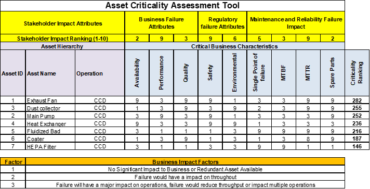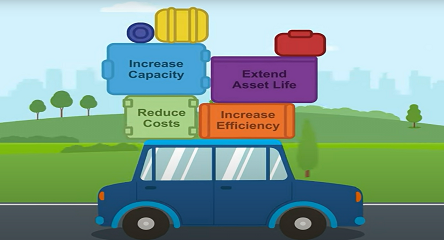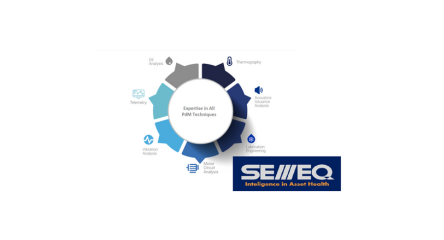INTRODUCTION
Physical assets are made up of hundreds of components each with a unique set of failure modes and with a unique failure distribution. Calculating reliability, R(t) requires a data collection system and data mining. Without data, your reliability improvement efforts will be chasing a moving target. But how can we simply and accurately determine our system reliability, R(t)?
Understanding our failure rate through data must be your reliability programs starting point because, it will lead your team toward an understanding of equipment criticality, bad actors, and will establish data-driven reliability improvement targets.
Today there are Computerized Maintenance Management System (CMMS) that are very effective in data collecting and mining. It requires accurate failure codes, dates and times, but if done correctly will yield powerful data.
PHASE 1: ASSET CRITICALITY ASSESSMENT
We start our Reliability Program by determining our Bad Actors using an Asset Criticality Assessment. Our Asset Criticality Assessment tool defines where to start your reliability Improvement Intuitive. With limited resources, it is imperative to properly identify out bad actors.
How to start an Asset Criticality Assessment
1. Define the Critical Business Characteristics that will be used to analyze each asset. These characteristics may include Operational, Regulatory or Reliability attributes.
2. Rank the Stakeholder Impact of each Critical Business Characteristics using a scale from 1 to 10. The greater the impact the higher the ranking.
3. Import the asset hierarchy into the Asset Criticality Assessment tool.
4. Apply the Business Impact Factors (1, 3, 9) to the Asset Criticality Assessment tool
5. Finally, sort the Criticality Ranking from highest to lowest and Identify the top 10% – 20% Critical Assets, these are your bad actors.
6. Identify the asset to start your reliability improvement initiative.

Figure 1: Asset Criticality Assessment Tool






